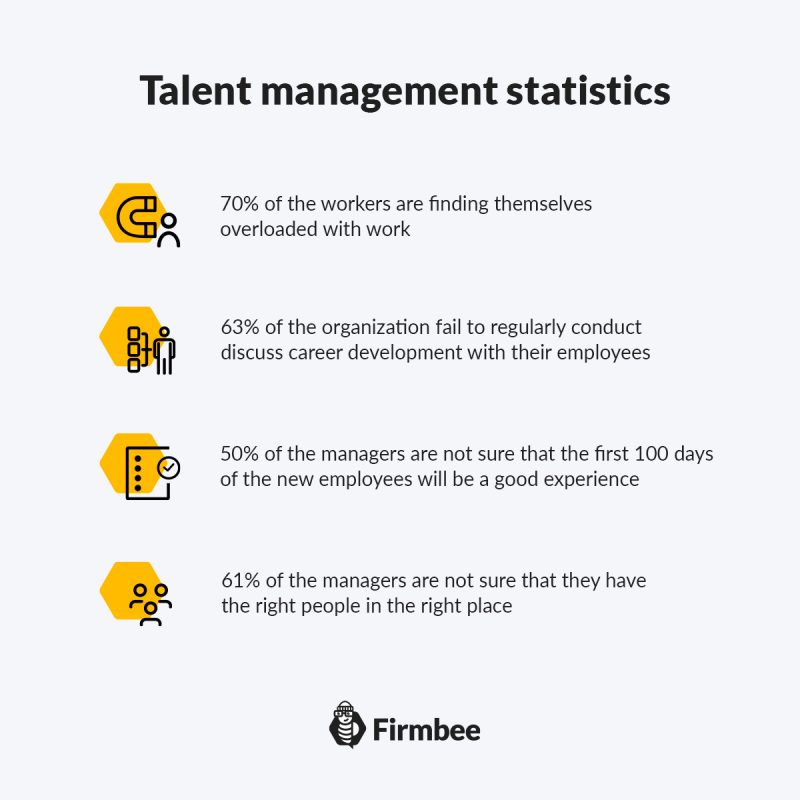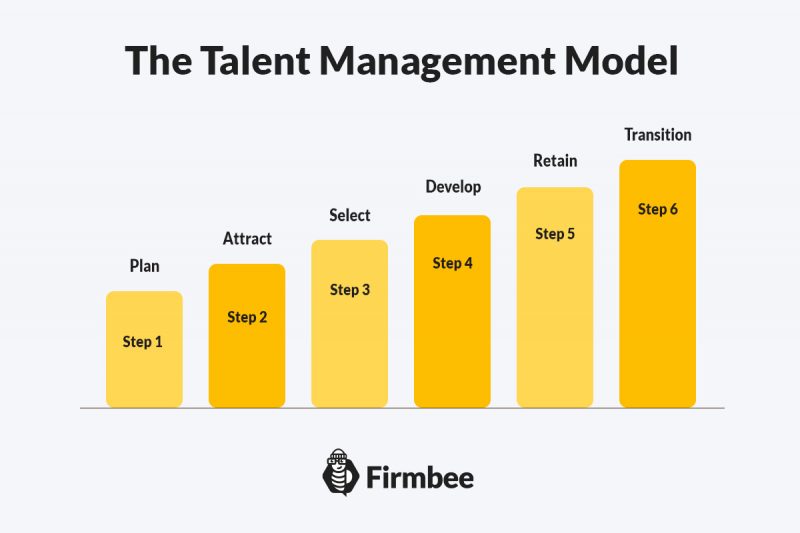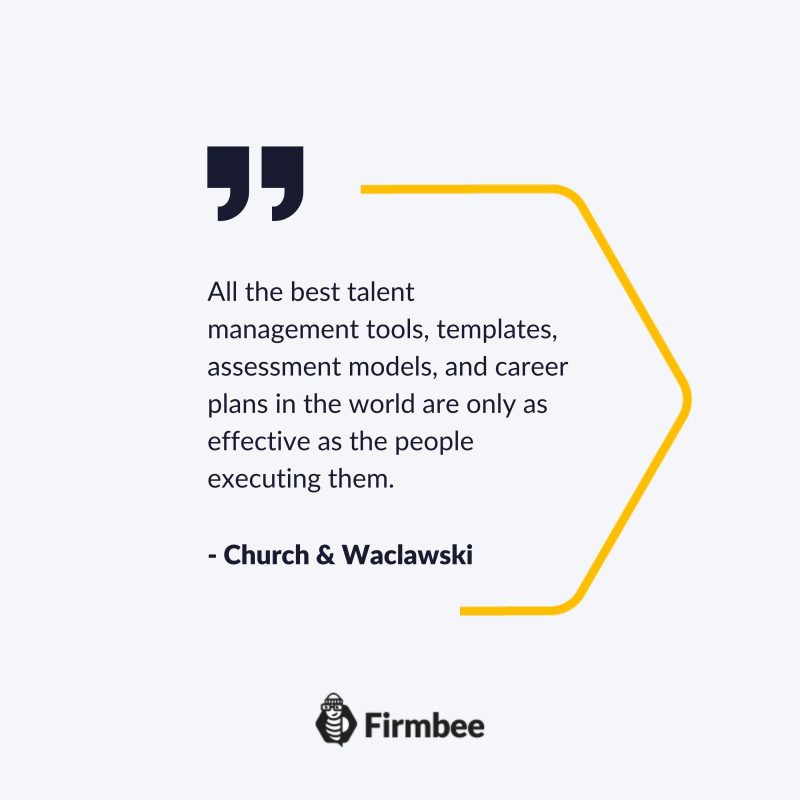What are the best talent management models? How important for the company is to have one? Do you know why talent management is one of the most important aspects of running your business? Read the article to find out more about talent management practices and methods.
Talent management models – table of content:
- What is talent management?
- Good practice in talent management
- What are the benefits of talent management?
- Talent management models
- Summary
What is talent management?
The talent management term was coined in the 1990s to express the shift in Human Resources management toward managing of skilled individuals throughout their whole career. Contemporarily, talent management is the huge area in Human Resources. Retaining and nurturing talents is one of the most important aspects of running business because more and more professionals are faced with the problem of high turnover of employees.
Talent management is an approach that companies make to attract the right candidates, retain them and help them develop. The biggest difficulty in talent management is locating the candidates with the required skill, ability and experience. The next difficulty is the aspect of attracting those good candidates to join the company. The next goal of the talent management is focused on retention the talent withing the organization.
Good practice in talent management
Talent management is essential for organizations but it has to be well-thought out and systematic, hence some good practices need to be followed. What else you could do to ensure your talent management is effective? Think about practices such as:
- every employee has to be a part of talent management process – either as a guide, partner, advisor or participant. Senior employees have to be involved in processes of recruitment of new high-quality employees
- talent management strategy has to be fully ingrained into other processes of the company, it should be aligned with business strategy and the overall goal of the business
- all detailed documents related to the candidates have to be adjusted to match other plans and schemes of the company, meaning that the development plan for an employee should be integrated with the business plan of the particular department

What are the benefits of talent management?
There are a few benefits of talent management that help to improve functioning of the business. Generally talent management influences some of the areas of business operation by:
- supporting improvement of company performance
- decreasing turnover of employees
- helping with creation of very efficient and productive teams
- raising the competitiveness of the company
- supporting innovative solutions
- strengthening the brand recognition
Good talent management model should combine several approaches and cover all enlisted areas of operation.

Talent management models
There is no one standardized model for talent management and each company aims to develop own scheme. The process of designing may be time consuming but after some time is only beneficial to create and use one. The structure of the organization influences the talent management model the most because different processes require different approach.
The traditional model of talent management is less flexible and less dynamic than the contemporary ones and concentrate on typical HR functions such as: planning of manpower, recruitment, selection, training, performance management, and compensation management.
The very same processes receive different names but all the talent management actions are similar in different types of model. We should expect that there must be a part of planning, followed by a stage of recruitment (or attracting), which is followed by the selection process, then there is development, retention and transition (or retirement scheme). Most of the models used by the companies show a variation of the traditional model.
The new models of talent management utilize new technologies in form of online talent management platforms. The program should cover all the processes and stages that may appear in relation to talent management. Some of the digital tools possess functionalities of core Human Resources Management such as: payroll and invoicing, other concentrate on innovative ideas and provide learning and feedback components.
Usually those applications are multifunctional, fully-integrated recruitment platforms that offer: management of relationship with the candidate, smart sourcing, interview management, tracking of applicants, analytics, statistics, onboarding module and Learning Management System module.
Since there were so many of the talent management models till today there is no need to discuss them in detail here – they are no longer applicable to the latest trends on the job market. Business owners have to deal with digital revolution and change in expectations of younger generations. Generation Z (1995 – 2009) and Millennials (1996 – 1981) in comparison to Generation X (1965-1980) and Baby Boomers (1946 – 1964) present higher percentage in prioritizing: mission of the company, quality culture, and training available to the employees. To deal with younger generations new approaches to talent management have to be developed.

Talent management models – summary
Talent management models evolve dynamically but there are generally two distinct models that of it: traditional and contemporary. The first one is strongly connected to core, typical HR functions, while the second uses new technologies for all processes related to attraction, training and retention of employees.
Talent management models have to be adaptable and cannot stay unchanged for ever – to get good quality talent management model the company has to check it and improve it regularly. Contemporary businesses have to deal with many changes on the job market: younger employees have specific expectations while technology brings new opportunities therefore talent management has become the most important part of company operations.
Read also: A link between diversity management and equal employment opportunity in the workplace
If you like our content, join our busy bees community on Facebook, Twitter, LinkedIn, Instagram, YouTube.
Author: Nicole Mankin
HR manager with an excellent ability to build a positive atmosphere and create a valuable environment for employees. She loves to see the potential of talented people and mobilize them to develop.


















